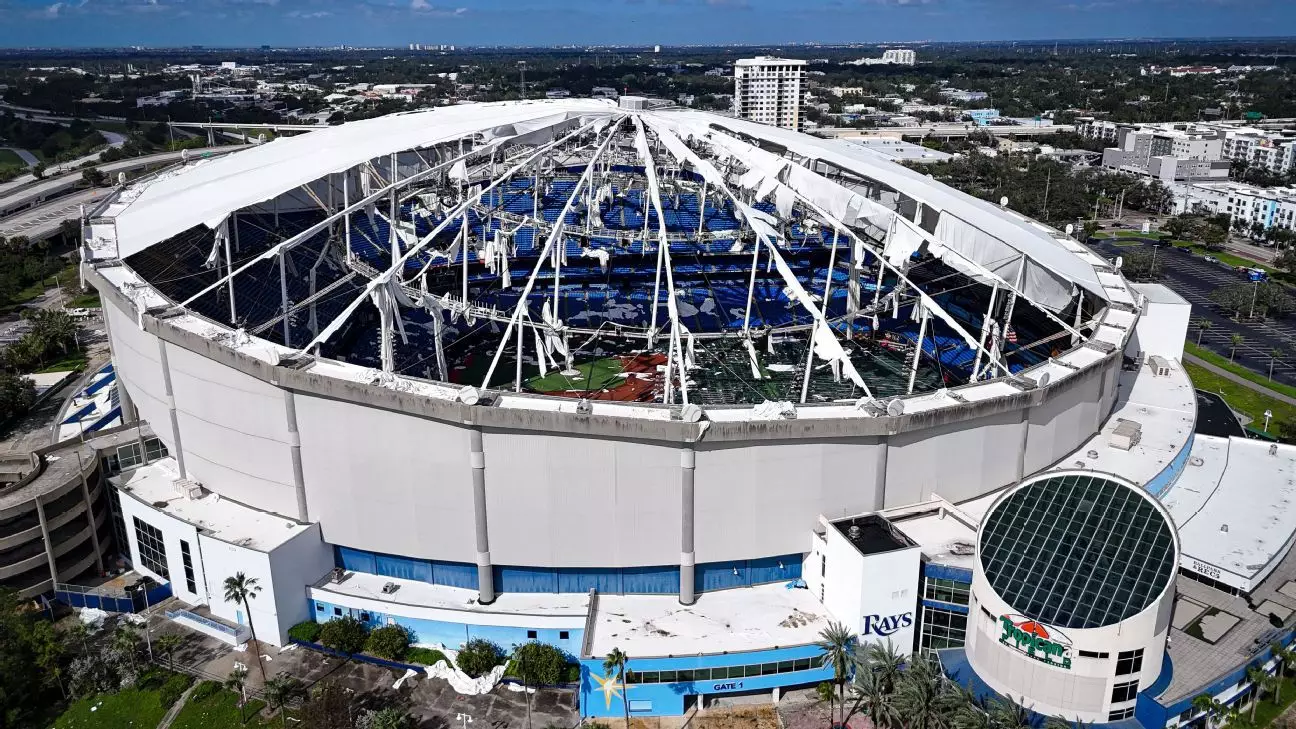The Tampa Bay Rays recently made headlines with a significant announcement regarding the future of Tropicana Field, the team’s home base in St. Petersburg, Florida. Following the devastating effects of Hurricane Milton, which left the ballpark in considerable disrepair, the Rays voiced their support for a $55.7 million city plan dedicated to refurbishing the stadium in preparation for the 2026 season opener. This comes at a crucial time when the team is set to temporarily relocate home games to the New York Yankees’ spring training facility in Tampa. This move, while necessary, brings attention to the intersection of sports, community, and urban development that defines the Rays’ future.
The decision to back the city’s repair plan reflects both the urgency of the situation and the Rays’ commitment to their home base. Matt Silverman, co-president of the Rays, clarified in his correspondence to the city’s chief administrator that the franchise expects the city to honor its obligation to refurbish Tropicana Field per the existing use agreement. This obligation is timely and critical; the team wishes to extinguish any lingering doubts about its dedication to revitalizing the much-loved stadium.
With parts of the ballpark’s roof torn away by the hurricane, and water damage affecting the stadium’s structure, a comprehensive repair strategy must be put in place. The team emphasizes the need for a swift timeline: delays could introduce significant logistical and financial complications for gas revenues and on-field operations if the 2026 season is not accommodated properly.
However, the journey toward restoration is laden with challenges. There has been hesitance from the St. Petersburg city council regarding the substantial expenditure required for the repairs, especially considering that the community is still recovering from consecutive storms; Hurricane Helene impacted the region shortly before Milton. This sentiment reveals an ongoing tension between the financial demands of maintaining sports infrastructure and the immediate recovery needs of the community.
Mayor Ken Welch has expressed hope that insurance and Federal Emergency Management Agency (FEMA) resources can help alleviate the burden on taxpayers. The discussion regarding funding demonstrates a critical dialogue about duty to restore not just a structure, but the community that surrounds it.
In tandem with the refurbishment efforts, the Rays have long-term aspirations for a new, multi-faceted ballpark project. The ambitious plans include a $1.3 billion facility designed to keep the team in St. Petersburg for the next 30 years. This includes components that extend beyond sports, such as affordable housing, a Black history museum, and retail spaces within what is termed the Historic Gas Plant District. This area, which historically supported a vibrant Black community before displacement due to urban development, signals a potential for restorative justice through urban renewal.
The envisioned project not only aims to embrace the historical relevance of the surrounding area but also offers the promise of economic revitalization through the creation of jobs and communal spaces.
While the Rays prepare to play games at Steinbrenner Field in Tampa during repairs, the stakeholders involved must remain focused on both immediate and long-term solutions. Silverman’s acknowledgment of the contractual obligation to remain in Tropicana Field for three additional seasons highlights the complexities that come with sports facility management. The expectation for a “grand reopening” post-repair serves not only as a signal of resilience but also as a reminder of the fragile balance between sports and community wellbeing.
As the conversation surrounding the repair of Tropicana Field unfolds, it serves as a microcosm for broader discussions about the role of sports teams in their communities, the importance of responsible urban development, and the challenges that cities face in balancing historical obligations with modern demands. With a commitment from the Rays and the city to enhance Tropicana Field and evolve into a new era of engagement with their shared history, the future appears to hold both promise and potential hurdles. The joint efforts toward restoration, urban revitalization, and community cohesion will ultimately define not just the fate of a sports team but the very fabric of St. Petersburg itself.

